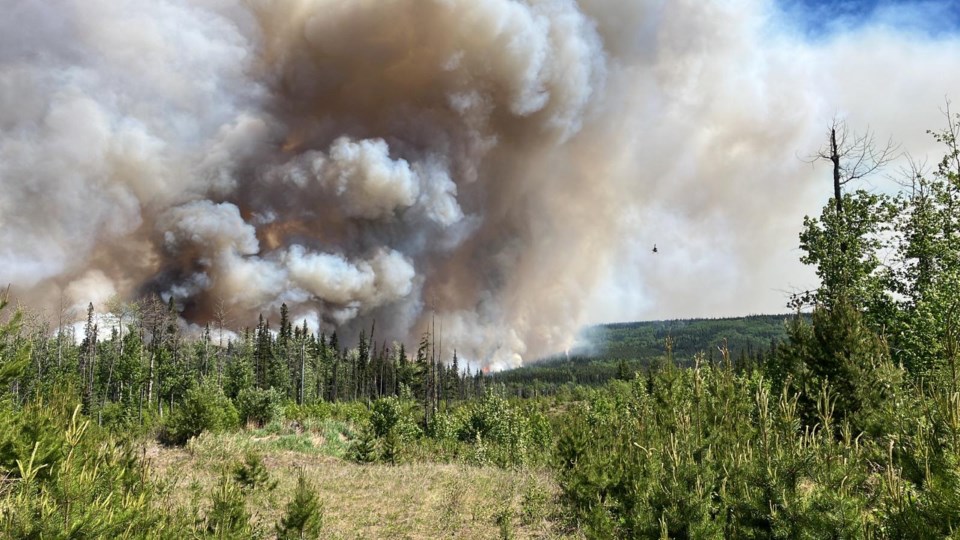B.C.'s wildfire season has already been one of worst the province has ever seen and the outlook going into the summer months looks daunting.
BC Wildfire Service (BCWS) officials spoke Thursday afternoon about the challenges the province is facing, after a dry fall 2022 and record-breaking heat through May has led to unseasonably dry conditions across the province.
“It wouldn't be going out on a limb to say that this has been one of the most challenging wildfire seasons to date ... 20,000 hectares is our 10-year average and we're at just over half a million hectares burned so far this spring,” said Cliff Chapman, BCWS director of operations.
B.C.'s three worst fire seasons — 2017, 2018 and 2021 — had just 997 ha., 27,029 ha. and 2,213 ha. burned at this point in the year, respectively.
Of this year's massive area burned so far, 344,725 hectares have come from the Donnie Creek fire burning in the province's north.
“It's hard to forecast whether or not it will be as challenging as some of the seasons past — '17, '18 and 2021 ... we all have to be prepared that this season has the potential to be very challenging,” Chapman said.
Neal McLoughlin, superintendent of predictive services for the BC Wildfire Service, noted the snowpack at upper elevation areas across the province melted two to four weeks quicker than normal this year, making the regions more susceptible to fires — particularly those started by lightning.
“One of our big concerns is the rate at which we see these lightning events occur ... we could see a big weather system change that brings widespread lightning all at once, and those are very concerning situations to fire agencies where there's more fire than we may be able to respond to,” McLoughlin said.
While temperatures across B.C. are expected to ease back to seasonal next week, Matt MacDonald, lead fire weather forecaster for the BCWS, said the shift in weather may bring some rain, but also lightning and strong winds.
“Given those persistent, deep drought conditions, it's not going to be enough rainfall to alleviate these deep, persistent drought conditions right across the province,” MacDonald said. “We'll have to see what the remainder of summer will bring as we get into the true core of fire season which is July and August, but those are typically our driest months and the possibility of playing catch up is very limited.”
McLoughlin noted two examples that show just how anomalous this year's fire season is. After receiving 40 mm of rain last month, the massive Donnie Creek wildfire rebounded quickly and made a 30-km run just five days after the rain. And the Newcastle Creek wildfire burning in the north has burned a full metre below the surface due to drought conditions.
“This might be typical in a really dry fall but to see this showing up in early May and June is very anomalous,” McLoughlin said. “These pictures are very much an indication that our metrics are a good indication of what we can expect in terms of fire behaviour.”
There are currently about 1,000 BCWS firefighters working in the province, and some that were sent to assist in Alberta will be called back in the next few days. A request for an additional 200 firefighters from across Canada had been made by the BCWS, but resources are in high demand due to massive wildfires across the country.
“This could be a year when we really have to dig deep and use the resources we have here to address our situation,” McLoughlin said.
Minister of Forests Bruce Ralston said his government is working to "boost" BCWS staff and equipment, “given recent history and knowing that climate change will result in more impactful fires.”



